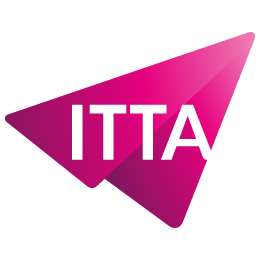Home > How to Master the Art of Public Speaking
Does the mere thought of speaking in public make you sweat? Between paralyzing stage fright and a message that goes off track, capturing attention can feel like an uphill battle. In this article, we reveal proven techniques to structure your speech, master your body language, and turn the experience into a genuine moment of connection. From mental preparation to stress-busting tips, discover how to shine in front of an audience even when the unexpected happens.

A poorly organized speech is like a map with no legend: you get lost quickly. Did you know that 55% of your message comes from posture and gestures? A clear structure is your compass to guide the audience. This level of rigor is essential in hybrid professional environments.
Explore proven methods to organize your ideas with impact:
Let’s take a concrete example to illustrate the PTTOME method, often used to structure professional speaking engagements such as sales pitches.
Digital tools are your allies. Mindomo to map out your ideas, PowerPoint to storyboard your slides, or Miro to create collaborative workshops. These solutions turn your preparation into a true ideas lab.

Talking to engineers like you would to 5-year-olds? Bad idea. Audience analysis goes through three filters: age, jargon, and hidden expectations. A quick survey with Google Forms can reveal some surprises!
Compare two settings: in a business context, focus on key figures and ROI with well-mastered technical language. At a public conference, choose visual metaphors and personal anecdotes. Rephrasing becomes your linguistic Swiss army knife.
Beware of common pitfalls! Excessive “laser targeting” creates blind spots. Ignoring post-talk feedback is like navigating without GPS. And above all: never use condescending language, even with beginners.
A study cited by Maddyness shows that 65% of executives fear the mic more than death! The solution? Cardiac coherence: inhale for 5 seconds, exhale for 5 seconds, for 5 minutes. Also try the “power pose”: arms wide open in front of the mirror to boost confidence.
Your ideal physical routine: 10 minutes of shoulder stretches, vocal warm-ups with scales, and the warrior stance (feet grounded, spine aligned). Don’t forget tongue-twisters for vocal prep: “She sells sea shells by the sea shore” or any French classic like “Les chemises de l’archiduchesse…”.
To transform anxiety into energy, a specialized training course offers techniques used by professional actors. The goal? Turn nerves into an ally rather than an enemy.

Did you know your body speaks louder than your words? According to research, only 7% of the perceived message comes from verbal content. The rest is split between tone (38%) and body language (55%).
| Type | Impact | Details |
|---|---|---|
| Words | 7% | Literal content of the speech |
| Voice | 38% | Tone, pace, modulation |
| Body | 55% | Gestures, posture, facial expressions |
Try this in front of a mirror: crossed arms vs open hands. The first posture creates an invisible barrier, while the second invites conversation. Experts recommend the “presenter stance”: feet shoulder-width apart, arms slightly bent for natural gestures.
The scenic golden triangle is no urban legend! It involves moving between three strategic points: center (key messages), left (technical arguments), right (concrete examples). This subtle choreography brings rhythm to your presentation.
Your hands are your allies. Sync them with your words: broad gestures for general concepts, joined fingers for precise details. A great exercise? Describe your weekend with exaggerated movements, then redo it with controlled gestures. The difference is strikingly obvious!
Eye contact is like a silent handshake. The scanning technique involves sweeping the room in zones of up to 5 people. Mentally count “1-2-3” on each group before moving to the next.
Your face is a giant emoticon. Practice in front of your phone: share good news with a frown, then do it again with a smile. The smiling version will be three times more persuasive, even through a screen!
A monotone voice puts even the most motivated to sleep. Play with variation: whisper anecdotes, emphasize key figures, pause after strong ideas. Vocal modulation exercises help develop captivating inflections, like Steve Jobs or Michelle Obama.

The DESC method turns objections into stepping stones. Picture this: a client challenges your budget. Describe the situation factually (“I understand your concern about the cost”), Express your feelings (“It worries me because…”), Suggest a solution (“What if we stagger the payments?”), Conclude with benefits (“You’ll gain flexibility”). This structured approach helps defuse 80% of tensions, according to trainers.
Host intense role-plays! One colleague plays the harsh critic, you play the unflappable CEO. Switch roles to see both sides of the mirror. The secret? Record yourself on your phone to analyze micro-expressions and verbal tics afterwards.
When you’re stuck, use these magic phrases: “To rephrase your point…” or “If I sum it up…”. These buffer phrases give you 10 valuable seconds to bounce back. Try them in your next meetings!
The “verbal bridge” saves you from blank moments. Forgot your killer argument? Transition with: “This naturally brings us to…”. Practice this flow by narrating your latest movie watched, using forced transitions every 30 seconds.
Boost your quick thinking with the free association game. A random word (e.g., “umbrella”) must become the central theme of your next sentence. The result? Your brain creates unexpected connections that hit home when faced with surprise questions.
Remember: great speakers like Churchill prepared their improvisations. Your challenge? Turn every coffee chat into training ground. Who knows? Your best comeback might be born next to the coffee machine!

Your slides are your dance partner, not your life raft! The 5/5/5 rule works wonders: 5 words per line, 5 lines per slide, change every 5 minutes. A recent TEDx talk used animated pictograms to explain blockchain—87% retained the concept compared to 23% with text alone.
A textbook case? The Airbnb pitch on the sharing economy: max 15 slides, 90% full-screen images, and tight storytelling. A must-replicate formula!
Turn your data into engaging stories using tools like Genially. One B2B client boosted their conversion rate by 40% by integrating interactive infographics into their pitches. The secret? Get your audience to click key elements to reveal the figures.
With Adobe Spark, create professional videos in just 3 clicks. Try the “before/after” format: show the problem in black and white, then the solution in vibrant color. Tools like Piktochart make dataviz accessible even to beginners.

Your video call survival kit:
For webinars, switch every 7 minutes between presentation and live interaction (polls, voice questions). Pro tip: prep some custom “home-made” memes related to your topic to lighten the mood between technical slides.
Always record yourself! Apps like Speechify analyze your speech patterns and pace in real time. The 360° evaluation grid assesses five criteria: message clarity, time management, audience engagement, technical control, and emotional impact.
Set SMART goals: “Increase eye contact by 30% within 2 weeks” is better than “Speak better.” Trello-style dashboards help track your progress, while video feedback from colleagues reveals blind spots.
An experienced trainer shares: “80% of mistakes come from poorly prepared improvisation and lack of technical testing.” His solution? A pre-talk checklist including sound test, internet backup, and a plan B for each device. To reinforce these best practices, check out 10 practical tips in a complementary blog post.
Structuring your speech, mastering body language, and handling the unexpected: these are your keys to impactful speaking. Apply these techniques now with the shared tools—your next audience deserves a confident and prepared version of you. Turn every speaking opportunity into a moment to shine naturally.
What are the 5 Ps of public speaking?
The most commonly cited 5 Ps are: preparation, to master your topic; presence, to embody your message with body and voice; passion, to captivate the audience; planning, to structure your speech effectively; and practice, since training is the key to fluency. Other variations exist, but these areas are widely recognized.
What are the three types of public speaking?
There are three main types: the informative speech, meant to explain or introduce; the persuasive speech, which aims to convince or gain support; and the inspirational speech, designed to motivate or move the audience. Identifying the right type helps tailor your tone and message.
What are the three essential elements of public speaking?
Three pillars are essential: a clear structure to organize your ideas, a powerful introduction to grab attention, and strong non-verbal communication. These elements form the foundation of a convincing and memorable talk.
How should you dress for public speaking?
It’s important to wear something comfortable, appropriate for the context, and neat—but not flashy. Your appearance should support your message without distracting from it. A consistent outfit with your posture enhances your credibility.
What postures should be avoided in public speaking?
Avoid closed postures like crossed arms, slouched shoulders, or avoiding eye contact. These gestures signal insecurity. An upright, grounded, and open stance is more engaging and reassuring for the audience.
How do you start a speech effectively?
A strong start grabs attention in the first few seconds. A story, a question, or a striking statistic can make a difference. You should also clearly announce the topic and explain why it matters to the audience.

ITTA is the leader in IT training and project management solutions and services in French-speaking Switzerland.
Our latest posts
Subscribe to the newsletter

Nous utilisons des cookies afin de vous garantir une expérience de navigation fluide, agréable et entièrement sécurisée sur notre site. Ces cookies nous permettent d’analyser et d’améliorer nos services en continu, afin de mieux répondre à vos attentes.
Monday to Friday
8:30 AM to 6:00 PM
Tel. 058 307 73 00
ITTA
Route des jeunes 35
1227 Carouge, Suisse
Monday to Friday, from 8:30 am to 06:00 pm.